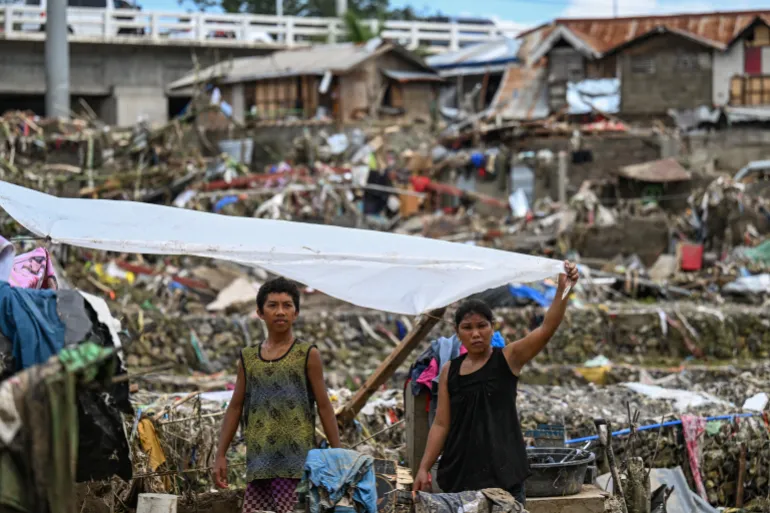Philippines begins cleanup as Typhoon Kalmaegi death toll hits 85 | Weather News
Residents say the powerful storm brought ‘raging’ flash floods that destroyed homes, overturned cars and blocked streets.
Published On 5 Nov 2025
Residents of the central Philippines have slowly begun cleanup efforts after powerful Typhoon Kalmaegi swept through the region, killing at least 85 people and leaving dozens missing.
Scenes of widescale destruction emerged in the hard-hit province of Cebu on Wednesday as the storm receded, revealing ravaged homes, overturned vehicles and streets blocked with piles of debris.
Recommended Stories
list of 4 itemsend of list
Among the 85 deaths were six military personnel whose helicopter crashed in Agusan del Sur on the island of Mindanao during a humanitarian mission. The country’s disaster agency also reported 75 people missing, and 17 injured.
In Cebu City, Marlon Enriquez, 58, was trying to salvage what was left of his family’s belongings as he scraped off the thick mud coating his house.
“This was the first time that has happened to us,” he told the Reuters news agency. “I’ve been living here for almost 16 years, and it was the first time I’ve experienced flooding [like this].”

Another resident, 53-year-old Reynaldo Vergara, said his small shop in the city of Mandaue, also in Cebu province, had been lost when a nearby river overflowed.
“Around four or five in the morning, the water was so strong that you couldn’t even step outside,” he told the AFP news agency. “Nothing like this has ever happened. The water was raging.”
The storm hit as Cebu province was still recovering from a 6.9-magnitude earthquake last month that killed dozens of people and displaced thousands.
The area around Cebu City was deluged with 183mm (seven inches) of rain in the 24 hours before Kalmaegi’s landfall, well over its 131mm (five-inch) monthly average, according to weather specialist Charmagne Varilla.

The massive rainfall set off flash floods and caused a river and other waterways to swell. More than 200,000 people were evacuated across the wider Visayas region, which includes Cebu Island and parts of southern Luzon and northern Mindanao.
Before noon on Wednesday, Kalmaegi blew away from western Palawan province into the South China Sea with sustained winds of up to 130km per hour (81 miles per hour) and gusts of up to 180km/h (112mph), according to forecasters.
The storm is forecast to gain strength while over the South China Sea before making its way to Vietnam, where preparations are under way in advance of Kalmaegi’s expected landfall on Friday.
China has warned of a “catastrophic wave process” in the South China Sea and activated maritime disaster emergency response in its southernmost province of Hainan, state broadcaster CCTV said.
